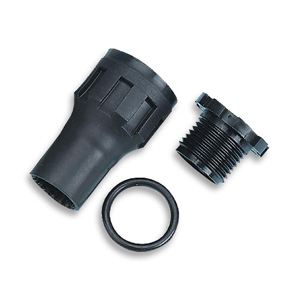 Cable entry seals, also known as cable grommets or cable entry systems, are versatile components used to manage and protect cables as they pass through enclosures or walls. These seals offer various benefits, including protection against environmental factors, mechanical damage, and the organization of cables. Here are some versatile uses and advantages of cable entry seals:
Cable entry seals, also known as cable grommets or cable entry systems, are versatile components used to manage and protect cables as they pass through enclosures or walls. These seals offer various benefits, including protection against environmental factors, mechanical damage, and the organization of cables. Here are some versatile uses and advantages of cable entry seals:
1. Environmental Protection
Cable entry seals provide a barrier against environmental factors such as dust, water, and other contaminants. This is particularly important in outdoor installations, industrial settings, and marine environments where cables need to be protected from harsh conditions. Seals with IP (Ingress Protection) ratings ensure specific levels of protection against solid objects and liquids.
2. Mechanical Protection
Cables are vulnerable to mechanical damage when passing through sharp or rough surfaces. Cable entry seals protect cables from abrasion, cuts, and other physical damages by providing a smooth transition point. This extends the life of the cables and maintains the integrity of the connections.
3. Fire Safety
Certain cable entry seals are designed to be fire-resistant or fire-retardant, which is crucial in preventing the spread of fire through cable entries in buildings and industrial facilities. These seals help to maintain the fire-resistance rating of walls and enclosures.
4. Cable Management and Organization
Cable entry seals help in organizing and managing multiple cables entering or exiting a panel or enclosure. They prevent cables from tangling and provide a neat and professional appearance. This organization simplifies maintenance and troubleshooting.
5. Electromagnetic Interference (EMI) Shielding
In environments where electromagnetic interference is a concern, cable entry seals can be used to provide EMI shielding. This is essential in protecting sensitive electronic equipment from interference, ensuring reliable operation.
6. Pressure and Vacuum Sealing
In certain applications, maintaining a pressure or vacuum within an enclosure is crucial. Cable entry seals can be designed to provide a tight seal that maintains internal conditions, which is important in industries like aerospace, pharmaceuticals, and laboratories.
7. Thermal Insulation
Cable entry seals can also provide thermal insulation, protecting cables from extreme temperatures. This is important in both high-temperature environments, such as near furnaces, and low-temperature settings, like refrigeration units.
8. Aesthetic Considerations
In addition to their functional benefits, cable entry seals contribute to the overall aesthetics of an installation. They provide a clean and professional finish, hiding the rough edges of cutouts and giving a polished look to the setup.
9. Ease of Installation and Maintenance
Modern cable entry seals are designed for easy installation and maintenance. They often come with modular designs that allow for quick assembly and disassembly, which is beneficial during initial installation and any subsequent upgrades or repairs.
Applications
– Telecommunications: Protecting and organizing cables in data centers and telecom installations.
– Automotive: Ensuring cables pass through vehicle panels without damage.
– Construction: Providing fire and environmental protection for cables in buildings.
– Manufacturing: Managing cables in machinery and equipment.
– Marine: Protecting cables on ships and offshore platforms from harsh sea conditions.
– Aerospace: Maintaining pressure and thermal conditions in aircraft and spacecraft.
Conclusion
Cable entry seals are essential components in various industries, providing protection, organization, and ease of maintenance for cable installations. Their versatility makes them a critical part of ensuring the longevity and reliability of electrical and communication systems.

